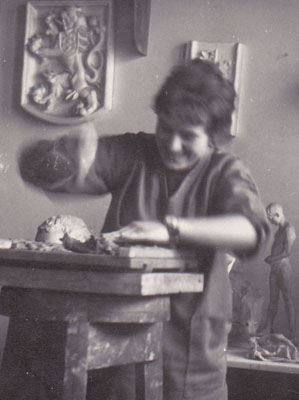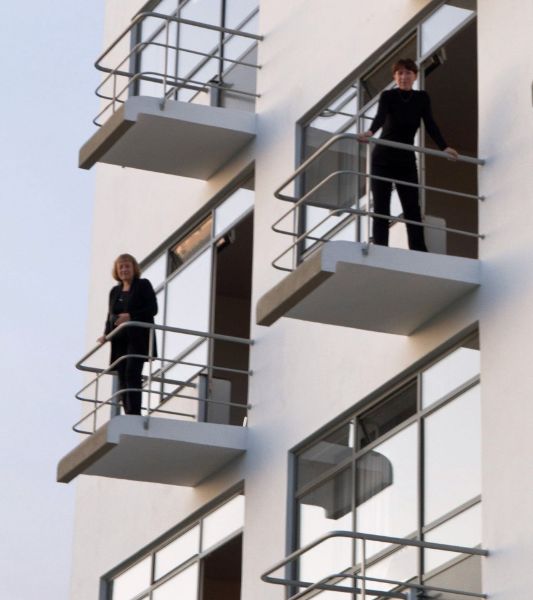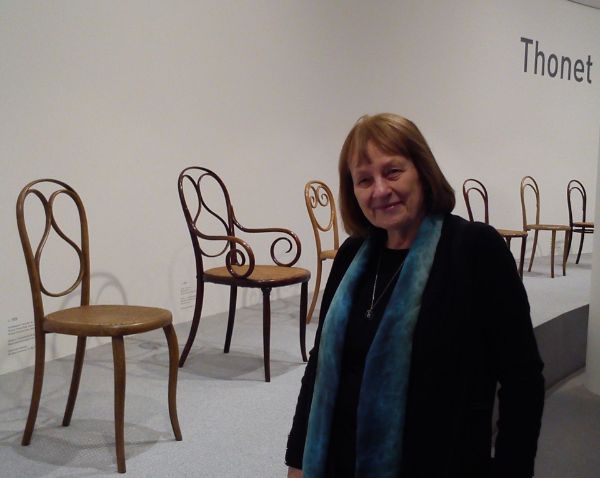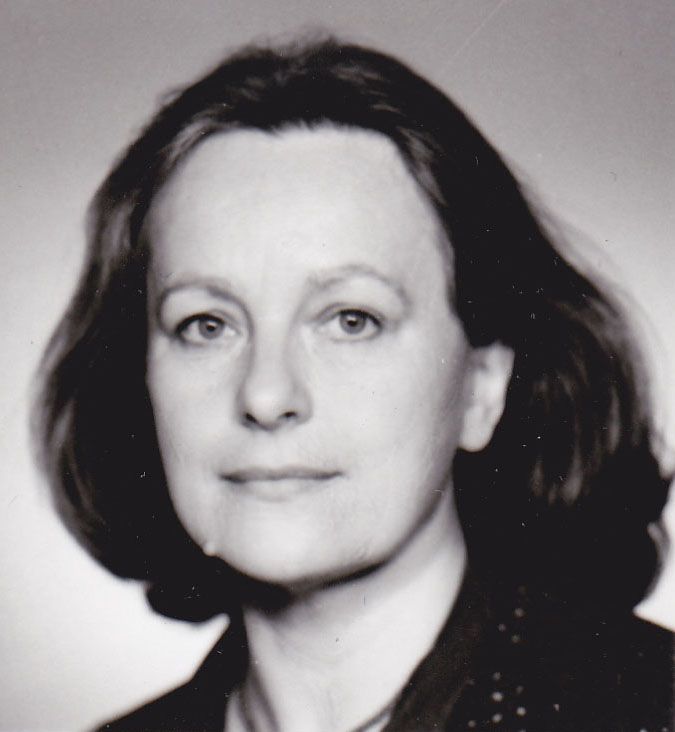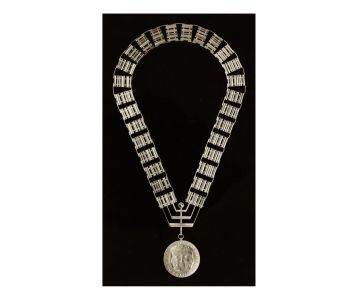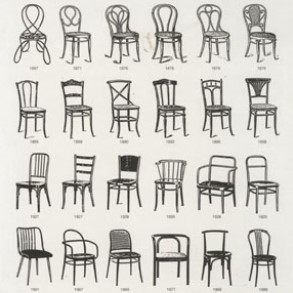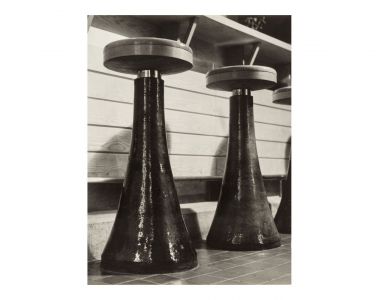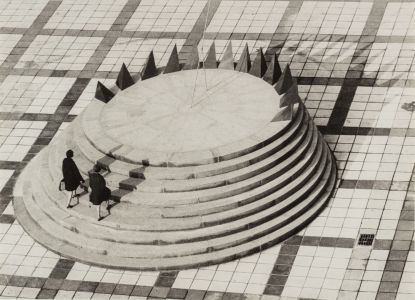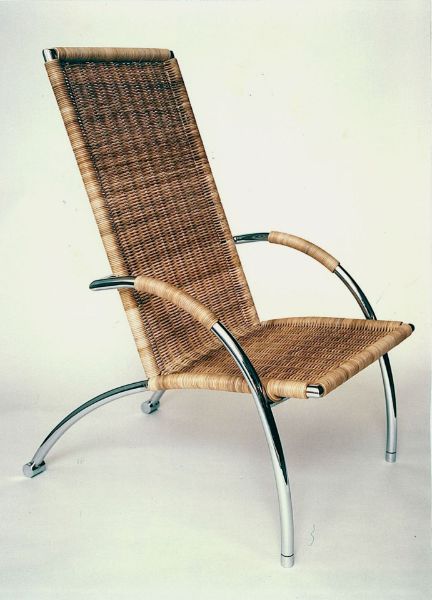Jaromíra Šimoníková (born Košinová) spent her childhood and youth in Přerov. The conviction that after the period of post-war shortages there would be an urgent need to create new environments and new objects led her to study architecture at the Czech Technical University in Prague, where she graduated in 1963 with a project for the café restaurant Nebozízek under František Cubr. After school, she joined the State Institute for the Reconstruction of Heritage Protected Towns and Buildings (SÚRPMO), where as a fresh graduate she created the interiors of the snack bar U Zlaté uličky at Prague Castle, for which she designed a number of atypical elements, including, among others, swivel bar stools with green ceramic bases with a concrete core.
However, she did not stay in the SÚRPMO for long. While studying architecture, she also began to attend František Tröster's studio of scenography at The Academy of Parforming Arts in Prague (DAMU) as an exceptional student. In 1964, when she was allowed to continue her studies as a full-time student, she left the state institute. The following year, her daughter Marta was born. In addition to working on the set design of several successful student theatre productions, her studies with Tröster brought her one unusual assignment – she took part in an internal studio competition for the Academy of Performing Arts (AMU) insignia, where her design for chains for academic officials won. The insignia were realised in 1968 and are still in use by the university today.
In the mid-1960s, Jaromíra Šimoníková succeeded in a shortlisted competition for the design of the outdoor area of the newly built campus of the University of Agriculture in Prague-Suchdol, where a monumental sundial was realized according to her design, whose sculptural tree-ring inspired steps also served for seating. She later re-created the sundial as a public space element twice, in Malý Smokovec and Dolní Břežany. Another prize-winning project from the 1960s, which did not ultimately result in realisation, came from a competition for fountains for Prague. Part of the competition brief included the selection of the location of the proposed object. Šimoníková designed a fountain for the landing of the New Castle Stairs in Prague's Malá Strana.
In 1966 she joined the Beta Studio led by Jan Šrámek of the newly established Association of Project Studios (Sdružení projektových ateliérů), where her husband Ivo Šimoník also worked. Here, in addition to working on architectural projects, she was given the opportunity to design a bentwood chair for the Czechoslovak pavilion at EXPO '70 in Osaka. After a subsequent period of working independently, mainly on furniture designs, she joined the Institute of Theory and History of Art of the Czechoslovak Academy of Sciences as a scientific aspirant, motivated by her interest in the history of designing industrially produced furniture. By studying historical materials, especially the documents of the First World Exhibition in London in 1851, she came to the conclusion that the Thonet company was at the origin of functional forms of furniture created for industrial production, and therefore focused her work on the development of the basic shapes of Thonet products. Before defending her doctoral thesis (she received her CSc. degree in 1981), she moved to the Institute of Industrial Design as a researcher, where she worked on research tasks focused mainly on interior design, furniture typology, design, and history until 1990. During her research work at the Academy and the Institute, she occasionally worked on interior and furniture designs.
In the first half of the 1990s she returned to designing. Her chairs were exhibited at several Czech and foreign fairs and shows. During this period, she also designed the interiors of the representative branches of ČSOB in Prague and Ostrava, the meeting rooms of the Office of the Government of the Czech Republic at the Straka Academy and, together with her daughter Marta Hradečná-Šimoníková, won a prize in a competition for the design of the meeting hall and adjacent representative rooms of the Senate of the Czech Republic. She was also involved in the Association of Interior Architects, where she held the position of vice-president. At one of the foreign furniture fairs in 1996 she met František Vrána, a long-time employee of the Brno Furniture Industry Development (Vývoj nábytkářského průmyslu Brno), who introduced her to the idea of starting furniture design teaching at Mendel University in Brno. Thanks to this encounter, her fifteen-year teaching career at the newly founded Institute of Furniture began, where she taught the subject of the basics of design and led studios for furniture design and small architectural elements. There she also developed the concept of a new course, Inspiration from Natural Structures, which included a bionic approach to furniture design, and she also addressed this topic in her habilitation thesis.
She is a member of the Czech Chamber of Architects.
Sources:
Jiří Michálek, Veřejná soutěž na kašny a fontány v Praze [Public Competition for Fountains and Fountains in Prague], Architektura ČSSR XXVII, 1968, č. 7, s. 404–407.
Jaromíra Šimoníková, Interiérová tvorba, Praha, 1982.
Michael Třeštík (ed.), Kdo je kdo. Architektura, Praha, 2000.
Rozhovor Šárky Malošíkové, Kláry Brůhové a Heleny Huber-Doudové s Jaromírou Šimoníkovou [Interview of Šárky Malošíková, Klára Brůhová and Helena Huber-Doudová with Jaromíra Šimoníková], Praha, březen 2022.
Antonie Varju, Jaromíra Šimoníková (pasport v rámci cvičení Dějiny a teorie architektury 5) [Antonie Varju, Jaromíra Šimoníková (passport within the exercise History and Theory of Architecture 5)], FA ČVUT v Praze, Praha 2022.

